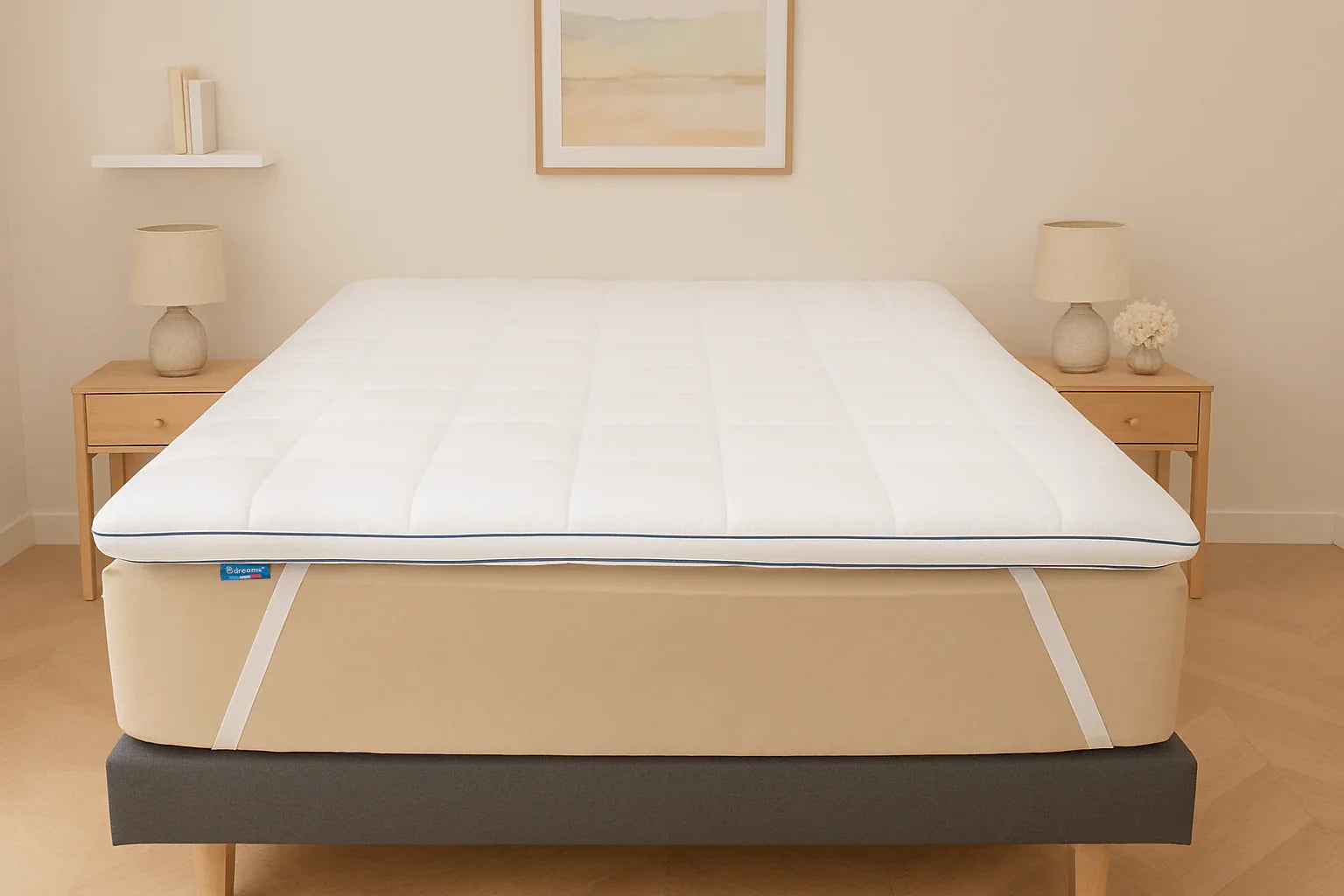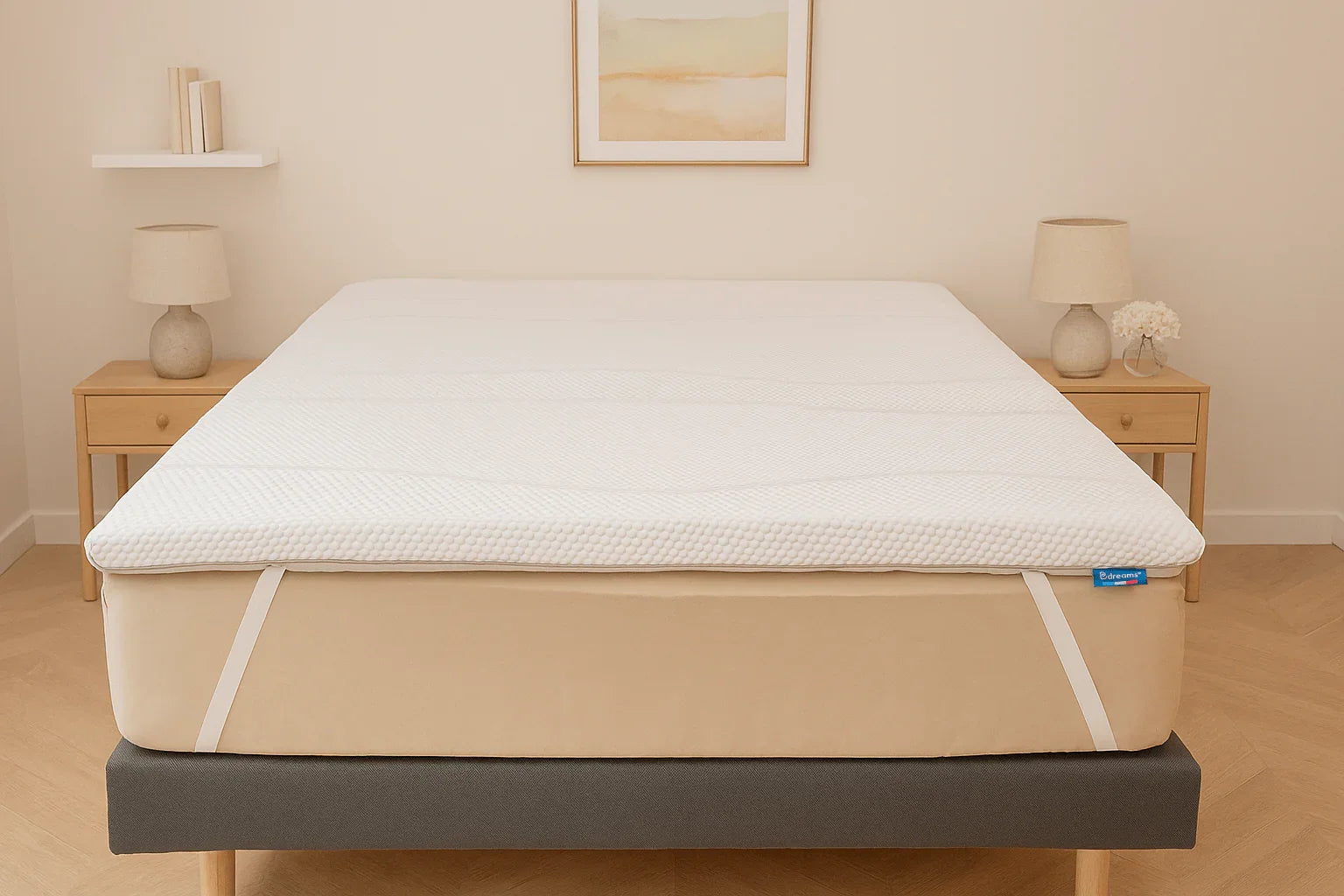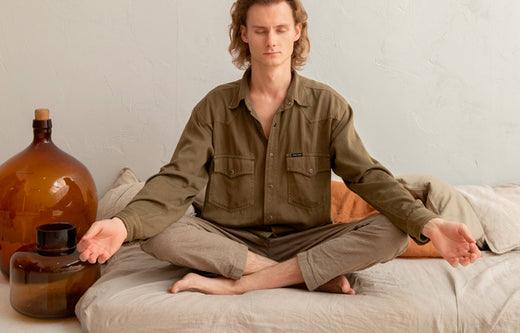Summary
- The 3 technical criteria for understanding a foam
- Differences between high resilience and viscoelastic foams
When you want to change your bedding, it's often difficult to choose between the different comfort options available. What composition should you choose for your mattress or mattress topper? High-resilience foam or viscoelastic foam? What does this mean?
From a technical point of view, foams are characterized by 3 criteria determining their comfort and their "physical appearance".
- Density: This indicates the weight of a block of foam per m3 (example: 35kg/m3 indicates that a 1m3 block of foam weighs 35kg). For information, our Osmoz mattress is made up of a 6cm thick memory foam on the surface with a density of 50kg/m3. In the lower part, the 16cm thick high resilience foam has a density of 35kg/m3. This information is important in terms of durability and not in terms of comfort; a low density implies a less durable mattress but will not change its comfort in any way. We speak of low density below 30kg/m3.
- KPA: Comfort is expressed in KPA (Kilopascals). This index measures the pressure applied to the foam in your mattress. If you have trouble pushing your hand into your mattress, for example, this means that it tends to be firm. The higher the KPA coefficient, the more resistant the foam is, and conversely, the lower the coefficient, the softer the foam.
- Resilience: This represents the mattress's ability to return to its initial shape after being compressed; it depends on the elastic properties of the material.
Therefore, the density, KPA and resilience of the foam are essential criteria when purchasing a mattress.
A high resilience polyurethane foam will generally be more elastic, and will have little firmness, it has an instant reaction. It follows movements perfectly.
Viscoelastic (memory) foam is a slow-resilience foam, meaning it takes time to return to its original shape after movement and can sometimes feel firm and inelastic at first contact. This foam is specially designed to conform to the shape of the body and adapt to its morphology. Sleepers can then enjoy a cocoon effect.
These differences are related to the structure of the foam. The "air bubbles" are more open on soft foam, hence their elasticity, and more closed for viscoelastic foam. When the air contained in the "bubbles" circulates more poorly, this gives the shape memory effect, the time it takes for the foam to regain its full volume.
Find the 2 Bdreams mattresses made of polyurethane and viscoelastic foams on our site and choose the comfort best suited to your needs: mattress category



















Leave a comment
This site is protected by hCaptcha and the hCaptcha Privacy Policy and Terms of Service apply.